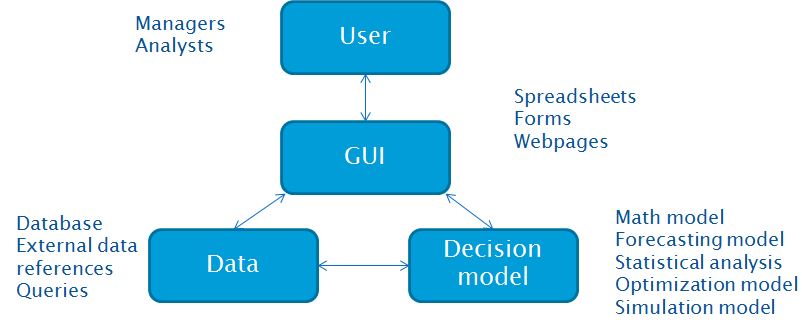A decision support system (DSS) is an intelligent information system, which combines IT and OR techniques and provides flexibility for the application development.
User: analysts and managers that use the model
Interface: spreadsheets, forms or webpages provided for interaction with the user. Typically your interface will consider the following components:
- Welcome sheet: application description and assumptions
- User input: sheet/s or form/s
- Resolve options: modify input, constraints, objectives
- Model calculations: statistical analysis, optimization, simulation
- Output: tables, charts
Math model: your forecasting model, statistical analysis, optimization model, simulation model. It also considers the specialized software you might require such as R, Arena, Simio, Open Solver, GAMS.
Data: the parameters, inputs and outputs related to your model. They can be contained in
- Databases
- External data references
- Queries
Identify these components and the interactions required early in the development process. Use component diagrams to analyze and communicate your application design.
Controllers
A good programming practice is to encapsulate interactions between components. A controller is a separate function used to handle the connections between the interface and the data or model components. They are useful for debugging but most importantly to localize changes in requirements without disrupting the tool design. To learn more about controllers see robustness analysis.
